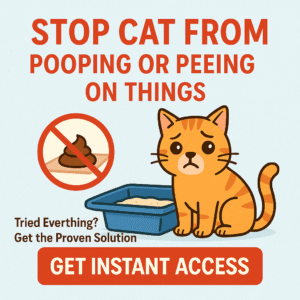When ice makes walkways hazardous, many homeowners reach for whatever’s on hand—even cat litter. You might think a bag of kitty grit is a convenient, pet-safe solution. In this in-depth guide, we look at whether cat litter is truly effective for icy sidewalks, what alternatives work better, and how to create a safer path step-by-step.
Plus, we’ll tie in how the Cat Spray No More ebook may surprise you with routines and mindset techniques that apply beyond cats—you’ll learn simple habits to keep your home safe, smooth, and welcoming all winter long.
What Does Cat Litter Actually Do on Ice?
Quick answer: Cat litter adds traction, but it doesn’t melt the ice. Ideal only as a short-term fix for slipping—not a long-term solution.
Cat litter—typically clay, silica, or recycled paper—provides a gritty surface. That grit helps your shoes gain traction over ice. But since it doesn’t lower the ice’s melting point, the ice remains solid until you manually remove it or melt it.
Understanding the Pros and Cons
✅ Pros of Using Cat Litter
- Instant traction: The gritty texture reduces slipping risk when walking.
- Non‑corrosive: Clay-based litters won’t eat away at concrete or damage vegetation nearby.
- Pet- and child-friendly: No salt means it’s less irritating to skin or paws.
⚠️ Cons of Using Cat Litter
- No melting action: Ice remains, posing a fall risk once grit moves.
- Mess when wet: Wet litter clumps into slushy sludge that can refreeze, causing slickness.
- Cleanup headaches: You’ll be sweeping clumps inside, clogging drains, and making work for yourself later.
Real User Feedback & Reddit Wisdom
On r/YouShouldKnow:
“It’s not a good idea to use kitty litter on icy surfaces. Most of them turn into a goopy mess that refreezes into a slick solid. Sand or gravel are better…”
And on r/Portland:
“If it’s below 0, … put down something for traction – sand, gravel, non‑clumping cat litter, or pumice. Once the ice does melt, go sweep it up.”
Reddit users quickly point out that while cat litter works in a pinch, materials like sand or gravel are better long-term fixes—even in freezing temps.
Comparing Options: Litter, Salt, Sand & Ice Melt
| Option | Melt Ice? | Add Traction? | Mess Level | Cleanup | Pet/Plant Safe? |
|---|---|---|---|---|---|
| Cat Litter | No | Yes (temporary) | High | Difficult | Yes |
| Sand/Gravel | No | Yes | Low–Medium | Easy | Yes |
| Pet-Safe Ice Melt | Yes | Yes | Moderate | Moderate | Yes |
| Rock Salt (NaCl) | Yes | Yes | High corrosive | Moderate | No (damages vegetation) |
Safer Alternatives to Cat Litter
1. Sand or Gravel
- Provides strong traction without melting, and is easy to sweep away.
- Eco-friendly, inexpensive, and pebble-sized grit helps avoid slush build-up.
2. Pet-Friendly Ice Melt
- Formulated to melt ice and reduce slipping—look for brands like Safe Paw or Traction Magic.
- Gentle on paws, concrete, and grass when used as directed.
3. Traction Agents (e.g., Walk-On-Ice)
- Offer excellent grip without the mess of sand or litter.
- Often reusable—apply once, sweep up, and store.
Using Cat Litter Smartly—and Only When It Actually Helps
If you’re caught in an emergency—say, stranded tire traction—the only type to use is non-clumping clay litter, such as plain “kitty clay.” Skip scented, clumping, or recycled paper litters, which become gooey or freeze into slick surfaces.
**Tips**:
- Shake a light, even layer—don’t drown the ice.
- Once ice melts or you warm the area, **sweep it up immediately** to prevent refreeze.
- Be ready to switch to better long-term options once the emergency is over.
Creating a Winter-Ready Walkway Routine
Rather than relying on cat litter, build a dependable winter system that saves you frustration and falls. Here’s a simple, repeatable approach:
Step 1: Shovel Promptly
Clear snow before it compacts—ice forms fast once it settles.
Step 2: Apply Safe Traction
- Morning routine: Sprinkle sand, pet-safe ice melt, or traction agent while thawing is expected.
- Evening routine: Reapply if temperature drops or fresh ice forms.
Step 3: Daily Cleanup
Sweep used grit—or return reusable traction granules—to storage. Wipe down walkways to remove residue and prevent grime buildup.
Step 4: Reinforce Good Habits
A Winter Walkway System—and the consistency behind it—reflects the kind of structured thinking the Cat Spray No More ebook encourages. It’s about building predictable, trackable routines that reduce stress—and even prevent mess.
Does the Cat Spray No More eBook Help Beyond Cat Behavior?
Absolutely. Though the title focuses on spray and marking issues, the book equips you with a mindset and routines that apply to managing icy walkways, pet care, and household consistency. You’ll learn:
- Routine creation: Daily checklists (like morning wafer routines) that mirror brushing cats or cleaning incidents.
- Stress reduction: Keeping your home predictable, calm, and orderly during winter months.
- Checklists & tracking: Whether it’s litter box usage or sidewalk maintenance, following precise steps helps maintain control.
Final Verdict: Should You Use Cat Litter for Ice?
Cat litter might work in a pinch—but only under the right circumstances (non-clumping, light use, immediate cleanup). For real safety and ease, sand, pet-safe ice melts, or traction agents are far better. They reduce slipping risk without the mess or refreeze issues.
In short:
- Use cat litter only as a true emergency traction aid.
- Adopt a dependable winter routine with better alternatives.
- Build daily habits to reduce stress and maintain safety—just like the methods in Cat Spray No More.
Ready to Take Control—Of Ice and Cats?
Whether you’re fighting winter slick or pet accidents, routine wins. The Cat Spray No More ebook gives you structure, clarity, and consistency so that messes—be they icy sidewalks or marking behavior—are handled with calm and confidence.
Download Cat Spray No More today and start building better routines for every challenge—seasonal or feline!
